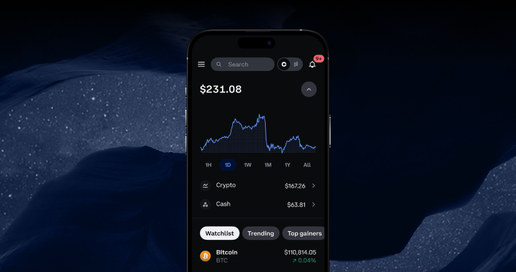What’s Bitcoin (BTC)? How can I buy it?
What is Bitcoin?
Bitcoin is a decentralized digital currency that enables peer-to-peer value transfer without reliance on banks or central authorities. Proposed in 2008 by the pseudonymous Satoshi Nakamoto in the white paper “Bitcoin: A Peer-to-Peer Electronic Cash System,” it launched in January 2009 as the first successful implementation of a blockchain-based cryptocurrency. Bitcoin’s supply is programmatically limited to 21 million coins, issued on a schedule that halves the block subsidy approximately every four years. This fixed issuance combined with an open, borderless network has made Bitcoin both a medium of exchange and a store-of-value asset for many users around the world.
Key properties:
- Decentralized: No single entity controls the network. Thousands of nodes validate rules independently.
- Scarce: Supply cap of 21 million coins with predictable issuance and periodic “halvings.”
- Censorship-resistant: Transactions can be broadcast and confirmed without permission from intermediaries.
- Transparent yet pseudonymous: The ledger is public, while addresses are not directly tied to real-world identities by default.
- Programmable: Bitcoin supports basic scripting for conditions like multisignature spending, time locks, and more advanced features via upgrades.
Use cases range from cross-border remittances and savings in high-inflation economies to a macro-asset used by institutions for diversification. Some jurisdictions recognize Bitcoin in specific regulatory frameworks; notably, El Salvador adopted Bitcoin as legal tender in 2021, while multiple countries treat it as a digital asset with varying tax and compliance regimes.
How does Bitcoin work? The tech that powers it
Bitcoin is powered by a blend of cryptography, distributed systems, and economic incentives designed to achieve consensus over a shared ledger without a central coordinator.
-
Ledger and UTXO model:
- Bitcoin’s blockchain is an append-only ledger of blocks containing transactions.
- Balances are tracked via the Unspent Transaction Output (UTXO) model: transactions consume prior outputs and create new ones, enabling parallel validation and easy verification of coin ownership.
-
Public-key cryptography:
- Ownership is proved using digital signatures (Elliptic Curve Digital Signature Algorithm over secp256k1).
- Users control private keys that sign transactions spending their UTXOs. Losing a private key effectively loses access to associated coins.
-
Mining and Proof-of-Work (PoW):
- Miners bundle transactions into candidate blocks and compete to find a nonce that makes the block header’s SHA-256 hash fall below a network-defined target.
- The first valid block propagates to the network and is accepted by nodes if it follows the consensus rules.
- Incentives: Miners receive a block reward (newly minted BTC plus transaction fees). The block subsidy halves every 210,000 blocks (~4 years), progressing from 50 BTC per block initially to 25, 12.5, 6.25, 3.125 BTC, and so on, until near the 21 million cap.
-
Consensus and difficulty adjustment:
- Nodes independently verify blocks against consensus rules (e.g., valid signatures, no double-spends, block weight limits).
- The “longest (most cumulative work) chain” rule ensures convergence.
- Every 2016 blocks (~two weeks), the protocol adjusts mining difficulty so the average block interval remains ~10 minutes, stabilizing issuance.
-
Networking and mempool:
- A peer-to-peer network relays transactions and blocks.
- Unconfirmed transactions sit in nodes’ mempools and are prioritized by fee rates. A fee market arises during congestion.
-
Script and upgrades:
- Bitcoin Script enables conditions like multisig, timelocks (CheckLockTimeVerify/CheckSequenceVerify), and more.
- Upgrades via soft forks have improved efficiency and privacy:
- Segregated Witness (SegWit, 2017) reduced malleability and expanded capacity.
- Taproot (BIP-340/341/342, activated 2021) introduced Schnorr signatures and Merkleized scripts for more private and efficient multisig and complex spending conditions.
-
Layer 2 and scalability:
- Lightning Network (introduced by Poon and Dryja) enables off-chain, instant micropayments using bidirectional payment channels that settle to the base chain only when necessary, increasing throughput and reducing fees for suitable use cases.
- Other scaling approaches include batched transactions, coinjoin/privacy tools, and improved wallet practices.
Security model:
- Honest-majority assumption in terms of hash power: an attacker would need to control a large share of mining power to rewrite recent blocks.
- Full nodes enforce rules regardless of miner actions, preventing invalid transactions from being accepted.
- Economic incentives reward honest participation and penalize attacks through cost and risk.
What makes Bitcoin unique?
- Credible monetary policy: A transparent, programmatic issuance schedule with a terminal cap of 21 million contrasts with discretionary monetary policies in fiat systems.
- Leaderless decentralization: Bitcoin’s governance is rough consensus among users, node operators, developers, and miners; there is no foundation or CEO.
- Security through PoW: Bitcoin’s Proof-of-Work has a long operational history, high hash rate, and well-understood game theory, providing robust finality over time.
- Neutral base layer: Minimal, conservative changes at Layer 1 prioritize security and decentralization, with innovation moved to layers above (e.g., Lightning).
- Liquidity and network effects: As the first and most widely held cryptocurrency, Bitcoin benefits from deep liquidity, broad exchange support, and institutional-grade infrastructure (custody, derivatives, ETFs in some markets).
- Transparency and auditability: Anyone can run a full node to independently verify supply, rules, and their own transactions.
Bitcoin price history and value: A comprehensive overview
Bitcoin’s price has experienced multiple boom-bust cycles while trending upward over the long term, reflecting adoption waves, macro liquidity, and changing narratives.
-
Early years (2009–2012):
- Price was effectively zero at launch; notable early events include the “Bitcoin pizza” purchase in 2010 (~10,000 BTC).
- Early exchanges and mining on CPUs/GPUs drove discovery and volatility.
-
First major cycle (2013–2015):
- Rapid rise to over $1,000 in late 2013, followed by a multi-year bear market after exchange failures (e.g., Mt. Gox) and regulatory uncertainty.
-
2016–2017 bull run:
- SegWit activation and growing retail interest culminated in an all-time high near $20,000 in December 2017, then a retrace through 2018’s bear market.
-
2020–2021 institutional wave:
- Post-2020 halving, macro stimulus, and growing institutional interest helped push Bitcoin to new highs near $69,000 in November 2021.
- Broader crypto leverage and risk collapses in 2022 contributed to a drawdown into the mid-teens (USD).
-
2023–2025 developments:
- Improvement in macro conditions and the approval of spot Bitcoin ETFs in the United States in January 2024 expanded institutional access and demand.
- The fourth halving occurred in April 2024, reducing the block subsidy from 6.25 to 3.125 BTC.
- Bitcoin set new all-time highs in 2024, with renewed volatility thereafter. Through 2025, price continues to be influenced by ETF flows, liquidity conditions, regulatory clarity, and adoption metrics.
Determinants of value:
- Supply dynamics: Fixed cap and periodic halvings create a predictable stock-to-flow trajectory.
- Demand drivers: Macro hedging, remittances, digital gold narrative, corporate treasuries, and institutional products (ETFs, futures).
- Network health: Hash rate, active addresses, liquidity, and development cadence.
- Regulatory and macro factors: Interest rates, risk appetite, and jurisdictional policies.
- Fee market and utility: On-chain settlement demand, Lightning usage, and new applications (e.g., Ordinals/inscriptions) can affect fees and user behavior.
Note: Bitcoin remains highly volatile. Historical performance is not indicative of future results.
Is now a good time to invest in Bitcoin?
Whether now is a good time depends on your objectives, risk tolerance, time horizon, and understanding of the asset’s volatility and unique risks.
Considerations:
- Investment thesis: Are you seeking long-term exposure to a scarce digital asset (“digital gold”), a hedge against monetary debasement, or a venture-style allocation to an emergent monetary network?
- Time horizon: Multi-year horizons have historically reduced the impact of short-term drawdowns, but they do not eliminate risk.
- Position sizing and diversification: Many investors limit allocation to a small percentage of their portfolio due to volatility.
- Custody: Decide between self-custody (greater control, requires operational security) and reputable custodians (convenience, counterparty risk).
- Dollar-cost averaging: A systematic approach can mitigate timing risk compared to lump-sum entries.
- Regulatory and tax: Understand your local regulations, reporting requirements, and tax treatment of purchases, sales, and transfers.
- Environmental and governance views: Consider your stance on Proof-of-Work’s energy profile versus its security properties. Empirical data shows a significant share of mining uses low-cost and, in some regions, renewable or curtailed energy, but the debate remains active.
Risks:
- Market risk: Extreme volatility, large drawdowns.
- Operational risk: Key mismanagement, phishing, exchange failures.
- Regulatory risk: Changing rules can impact access, custody, and taxation.
- Liquidity and fee spikes: Network congestion can raise transaction fees and slow confirmations.
This is educational information, not financial advice. Consider consulting a qualified financial professional before investing.
References and further reading
- Satoshi Nakamoto (2008). Bitcoin: A Peer-to-Peer Electronic Cash System. https://bitcoin.org/bitcoin.pdf
- Bitcoin Developer Documentation (Consensus, Transactions, Script, P2P). https://developer.bitcoin.org/
- Bitcoin Core docs and BIPs (e.g., BIP-340/341/342 for Taproot). https://github.com/bitcoin/bips
- Lightning Network (Poon & Dryja, 2016). https://lightning.network/lightning-network-paper.pdf
- Cambridge Bitcoin Electricity Consumption Index (CBECI). https://ccaf.io/cbeci/
- U.S. SEC approval of spot Bitcoin ETFs (Jan 2024). See SEC releases and major exchange listings.
- BIS and IMF publications on cryptoassets for regulatory and macro perspectives.
Discover the different ways to buy crypto in Singapore
Create an OKX account
Get verified
Start a trade
Enter an amount
Choose your payment method
Confirm your order
All done
Create an OKX account
Get verified
Start a trade
If Bitcoin isn’t available in the dropdown, purchase any of the available tokens and convert it to BTC.
Place a buy order
Complete your purchase
Receive your BTC
All done
Get the OKX app or Wallet extension
Set up your wallet
Fund your wallet
Find your next purchase
Note:
Tokens with the same symbol can exist on multiple networks or may be forged. Always double-check the contract address and blockchain to avoid interacting with the wrong tokens.
Trade your crypto on OKX DEX
Choose the token you’re paying with (e.g., USDT, ETH, or BNB), enter your desired trading amount, and adjust slippage if needed. Then, confirm and authorize the transaction in your OKX Wallet.
Limit order (optional):
If you’d prefer to set a specific price for your crypto, you can place a limit order in Swap mode.
Enter the limit price and trading amount, then place your order.
Receive your crypto
All done
Learn more about how to buy Bitcoin (BTC)





Make informed decisions


How to get Bitcoin for free
See what you can do with your crypto
How to buy Bitcoin (BTC) FAQ
Disclaimer
You are viewing content that has been summarized by AI. Please be aware that the information provided may not be accurate, complete, or up-to-date. This information is not (i) investment advice or an investment recommendation, (ii) an offer, solicitation, or inducement to buy, sell or hold digital assets, or (iii) financial, accounting, legal or tax advice. Digital assets are subject to market volatility, involve a high degree of risk, and can lose value. You should carefully consider whether trading or holding digital assets is suitable for you in light of your financial condition and risk tolerance. Please consult your legal/tax/investment professional for questions about your specific circumstances.














